Review: Toyota 4Runner TRD Pro
Ladies and gentlemen, there are road tests, and then there are off-road tests. In a typical road test, writers use the car on their daily commute, playing with all the features and determine which bother them and which don’t. There may be some family activities thrown in, like going on a weekend trip or driving around the soccer team carpool. Sometimes, they might attempt to verify the manufacturer-reported performance numbers and use their smartphone to record 0-60 acceleration times and lateral g-forces in the corners. Other times they might go to the hardware store and fill the trunk with bricks to cargo volume and payload capacity. But most of the time, writers just utilize the car for day-to-day activities, evaluating a product in the most mundane of circumstances.
In an off-road test, the writer has to set aside a day or two of his or her time and plan an excursion that doesn’t involve driving on paved roads. Their smartphone probably won’t work unless they’ve scaled the top of a hill with their vehicle. The only features worth using are the radio (if it can pick up any stations), and the transfer case to shift into low range so you can climb up the nearest mountain for the ultimate photo of your off-road test car. There won’t be any other people, let alone cars, for miles, meaning you can avoid loud stereos and your carpooling buddies’ conversations about how they now have to watch Birdman since it won a lot of Oscars. You won’t have people staring at you in the Home Depot parking lot with a stack of bricks that can collapse on you at any time. Nothing around you during the test is ordinary.
Such was the case I was presented with when I found out I’d be getting the 4Runner TRD Pro for a week. Beyond driving on the road, I had to discover how the truck performed off the concrete, since that’s what most buyers would buy a 4Runner TRD Pro for. It was perfect since a) I don’t like going to Home Depot, and b) testing the 4Runner off-road was a great reason to spend the day away from civilization.
First, let’s start focus on the looks of the 4Runner TRD Pro. With the black wheels and 31.5-inch Nitto Terra Grappler tires, the “TOYOTA” lettering on the grille rather than the emblem, and the TRD suspension kit, the TRD Pro looks the business. The exterior colors offered are a solid black, a solid white, and a solid red-orange color called “Inferno,” color choices that are oddly very similar to what the BMW 1-Series M was offered with. All the interiors have black SofTex (think a very nice-feeling vinyl material that most people will mistake for leather) seats and black interior trim with red stitching. Again, very similar to the 1-Series M. You can’t get any other interior color choices from the factory.
Toyota didn’t focus too much on on-road performance of the 4Runner TRD Pro. They stuck with what they knew in the 4.0-liter V-6 and 5-speed automatic combination that’s found in all new 4Runners. Sure, you might want more power, but I wouldn’t be comfortable dealing with a faulty turbocharger or supercharger in the middle of any desert in the world. I will admit it doesn’t accelerate to 60 miles per hour very quickly. As for handling, even with those immense Nitto tires and the TRD Bilstein shocks, the TRD Pro still drove well. It isn’t available with the Kinetic Dynamic Suspension System like the Trail model, so the handling isn’t as sharp. However, don’t expect U-turns to go perfectly. Three-point turns will become the norm if you suddenly decide to go in the other direction. I learned that the hard way.
Regarding comfort and ergonomics, considering the off-road modifications, the 4Runner remained a refined vehicle, especially compared to some Jeeps and modified Nissan Xterras that the 4Runner was hanging with. The heated front seats were power-adjustable with two-way lumbar support, while the back seats provided plenty of legroom. On the highway the 4Runner rode like any normal car. After five hours round-trip of highway driving and off-roading, there were no complaints of discomfort or soreness from any of the passengers. Unlike the Limited, the TRD Pro only seats five people, so it is not for large families. Cargo room is plentiful, and I was able to fit two bikes with two-thirds of the rear seat folded down.
The TRD Pro comes standard with the Entune premium audio system and navigation. The audio system was fairly good for a base unit and I can only imagine what the JBL unit in the Limited sounds like. As for operating the navigation system, the same Toyota quirks apply. There’s limited use of the system while driving, so I found myself shifting into Park at some stoplights; however, using voice control on the go (which understood what I said surprisingly well) eliminates a good deal of the problem. You can install apps on the Entune system as well, while the screen doubles up as a back-up camera display.
This thing was absolutely exceptional off-road. And all things considered, I wasn’t easy on it. Since driving into the creeks around my house to test the 4Runners off-road capabilities would likely earn me a visit from local law enforcement and looks of scorn from my neighborhood, I took it to the Hollister Hills State Vehicular Recreation Area. Think of it as a skate park, but for people with off-road vehicles rather than wearing skates. There are trails and obstacle courses to take your 4WD vehicle on. When you’re there, the views are secondary to the driving.
The key off-road features in the 4Runner were the Multi-Terrain Select and Crawl Control. Those controls were located on the overhead console, and were very simple to use in tandem with the driver information screen in the gauge cluster. Multi-Terrain Select came in handy plenty of times when going in the mud, traversing the rocks, and doing the mogul obstacles. All I had to do was make sure the 4Runner was shifted into low range with the correct mode selected, and the Multi-Terrain Select managed to find grip on such surfaces, even with a wheel in the air.
Crawl Control could be thought of as an off-road cruise control system. It worked by engaging low range, pressing the on/off button on the overhead console, selecting a speed ( Low, Medium, High), and then the car would work both the throttle and the brakes while I steered the 4Runner. Steering input from the driver is a must, but your feet can be off the pedals when the Crawl Control is on. Putting a foot on the throttle or brakes disengages Crawl Control. The system worked exceptionally well when ascending and descending steep and rocky dirt roads, and working without fault when doing the adventure course at Hollister Hills.
When it came to Hollister Hills SVRA’s 4×4 Obstacle Course, where the avid four-wheelers bring their rock crawlers and production vehicles with plenty of off-road upgrades, the 4Runner held its own very well for a truck that was entirely stock. Some obstacles which Jeeps couldn’t climb, the 4Runner managed to do, while on muddy roads, the 4Runner managed to keep going without requiring me to select low range. On one particularly steep obstacle, the locking rear differential helped tremendously, as otherwise, the vehicle would have had a more difficult time climbing up. Overall, I enjoyed the 4Runner TRD Pro off-road and the vehicle (without any modifications whatsoever) was very, very capable.
On the trails, the 4Runner was delightful. It was able to climb up the rockiest of trails in order to get to a nice overlook to have the lunch I brought. When descending or ascending some of the trails, all I had to do was engage Crawl Control, point the 4Runner in the correct direction, and the onboard systems did the rest of the work. The size of the truck wasn’t an issue; there were no dents on the bodywork of the car and few moments where I preferred the size of a Jeep Wrangler. I left Multi-Terrain Select on most of the time as an added line of defense, which was extremely helpful when ascending some steep trails at Hollister Hills.
As for downsides with the TRD Pro, there are a few. One is the fuel economy, where I got 17 mpg during my time with the 4Runner both on- and off-road in 2WD, 4WD, and low range enabled. On the bright side, the fuel tank is 23 gallons, meaning the range is quite good. On the other hand, get used to long fill-ups (both a Yaris and a Cavalier filled up at the same pump during the time it took me to refuel the 4Runner) and $60+ gas bills. Another downside is that there are only going to be 3,400 units of the 4Runner TRD Pro for 2015. As such, the only available options on this model are only the dealer-installed accessories. A sunroof, leather seats, and a factory-installed high-end sound system aren’t available.
However, Toyota knows the 4Runner TRD Pro isn’t for everyone if they’re offering only 3,400 of them. If you need a third seat and/or leather seats, you should choose the Limited (or spend $30,000 more for a Land Cruiser). If you have to have a sunroof and want the option of more adaptive and dynamic suspension (KDSS), you can go with the Trail. If you don’t want to spend more than $40,000, and I don’t think dealers will lower the price much on the TRD Pro, get the SR5. If fuel economy is your thing, get a Highlander. And if you want more power, consider a Tundra TRD Pro with the 5.7-liter V-8 or getting the Land Cruiser, as it too has Crawl Control and Multi-Terrain Select.
As for pricing, the 4Runner TRD Pro I tested stickered at $43,134, with some accessories installed. Oddly, the base price on my test car was $200 lower than the base price on the Toyota website, which is $41,310 before the $885 destination charge. Additionally, be aware that many TRD Pros will come equipped with the sliding rear cargo deck for an extra $350, so factor that into the final price. Despite the price increases, with an MSRP of around $43,000, I think the 4Runner TRD Pro is a steal. Normal 4Runners are generally listed towards the top of Kelley Blue Book reports of projected resale value, and the 4WD TRD Pro is certain to depreciate less due to its low production numbers.
Now, be aware that procuring a 4Runner TRD Pro is actually pretty tough at the moment. After going on the forums, many people have to order their TRD Pros and wait a few months. Some have even had to pay over sticker due to where they live. When I tried searching for a 4Runner TRD Pro in the San Francisco Bay Area, I had an extremely tough time finding one. After my search and contacting local dealers, it looked like I would have to order the car (and even pay over sticker in some cases) to get my hands on a new TRD Pro. If anything, I think the depreciation will be a lot less than any of us ever would think.
In the end, I am enamored with the Toyota 4Runner TRD Pro, especially its off-road and even on-road capabilities. If you’re considering a Wrangler Unlimited Rubicon, Xterra PRO-4X, Land Rover LR4, or a Grand Cherokee with the off-road package, take a good look at the 4Runner TRD Pro. It’s rare that I write this of any car, but if you can manage to get your hands on one at MSRP, you should seriously think it over. Considering that it’s being made in limited quantities, is reliable, managed to do some very tough trails that some highly modified off-road vehicles can’t do, looks really good, and is still your normal, closed, comfortable 4Runner at the end of day, the TRD Pro is phenomenal.
Toyota provided the vehicle, a full tank of gas for this review, and insurance. That last one was important since I returned it with a couple gashes on the underbody.
More by Satish Kondapavulur
Latest Car Reviews
Read moreLatest Product Reviews
Read moreRecent Comments
- Aaron This is literally my junkyard for my 2001 Chevy Tracker, 1998 Volvo S70, and 2002 Toyota Camry. Glad you could visit!
- Lou_BC Let me see. Humans are fallible. They can be very greedy. Politicians sell to the highest bidder. What could go wrong?
- SPPPP Vibrant color 9 times out of 10 for me. There may be a few shapes that look just right in metallic gray, for example. There are a few nices ones out there. And I like VW "White Silver". But I'd usually prefer a deep red or a vibrant metallic green. Or a bright blue.
- 28-Cars-Later Say it ain't so, so reboot #6* isn't going to change anything?[list=1][*]V4-6-8 and High "Tech" 4100.[/*][*]Front wheel drive sooooo modern.[/*][*]NOrthSTARt.[/*][*]Catera wooooo.[/*][*]ATS all the things.[/*][*]We're *are* your daddy's Tesla. [/*][/list=1]
- MaintenanceCosts Can I have the hybrid powertrains and packaging of the RAV4 Hybrid or Prime with the interior materials, design, and build quality of the Mazda?



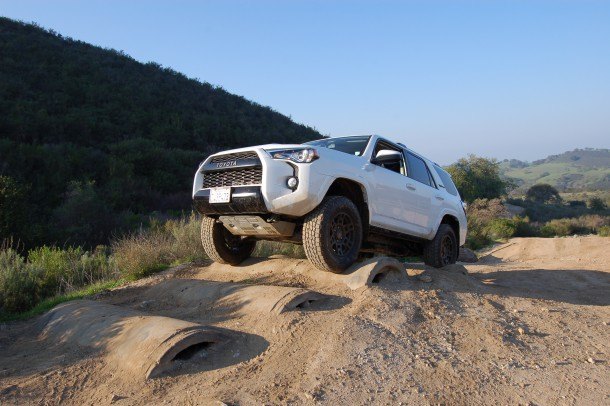































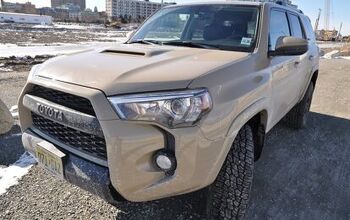

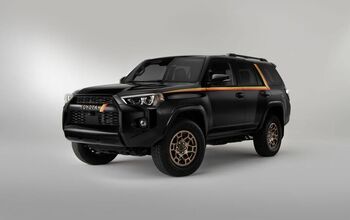
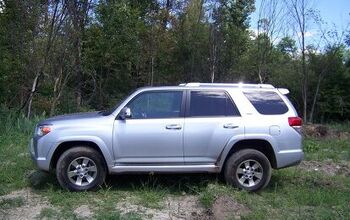
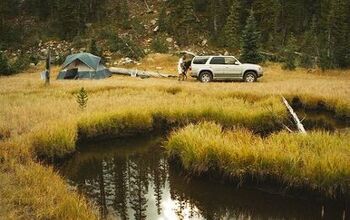










Comments
Join the conversation
On offroad ability where does this stack up to the Xterra Pro 4x?
THREAD BUMP I worked 80 hours this week - work is crazy now. Anyways, I thought of this article/essay as I had a quick chance to peruse truck prices on a couple lots this week. IF I were to buy a truck, there's no doubt this is the one I'd get. The 2nd choice would be a stripped down RAM Ecodiesel. Most new trucks are WAY too expensive, because dealers are stocking incredibly "optioned up" versions at a high % mix of their dealer lot. I saw 50k to 63k F150s, Sierras (Vortec to Duramax versions at 63k), etc., and it's insane. This Toyota has better quality, will last forever, and has everything most truck buyer needs, and is a truer truck, with fantastic resale value, with a proven, rock solid power train, than the gadget soaked full sized and mid sized GM and Ford offerings that cost way more because they're stuffed full of bullsh!t.